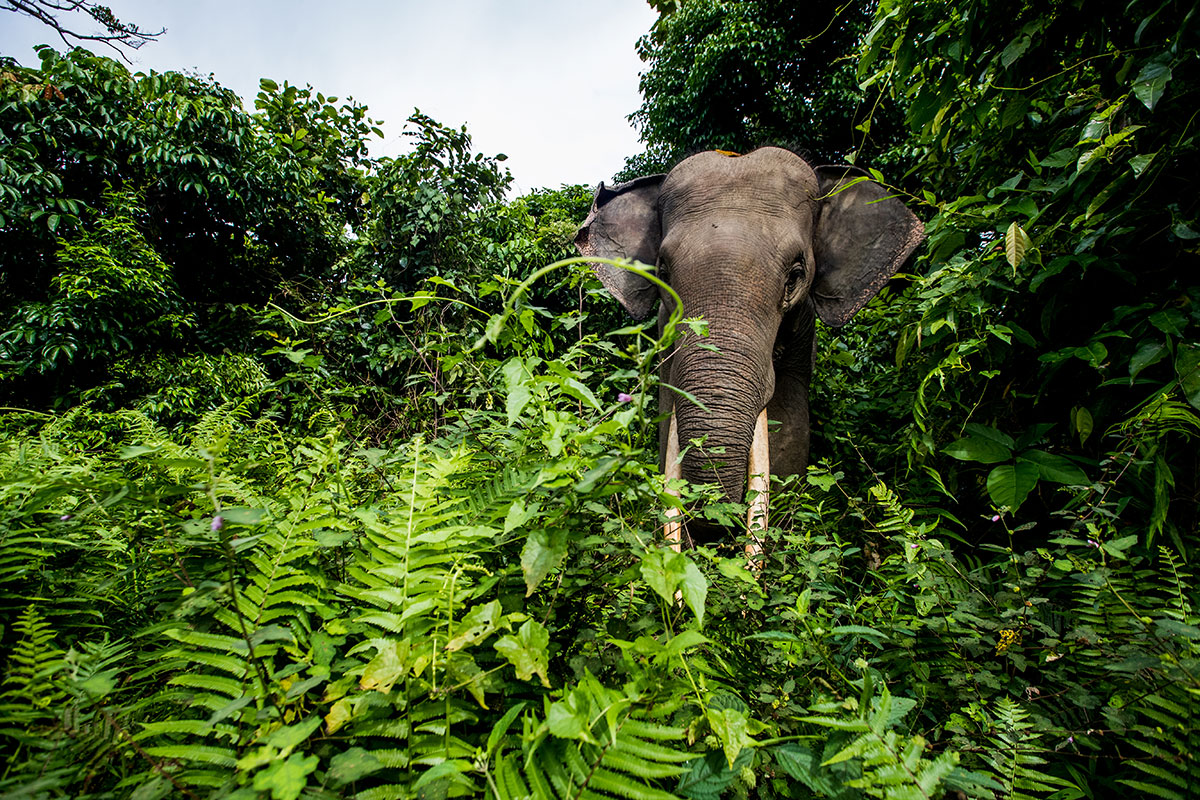Sumatran Elephant
(Elephas maximus)

The forests, shrublands, grasslands of Sumatra and North Kalimantan Indonesia, and Sabah in Malaysia
I’m may look beefy, but I’m 100% herbivore. You can find me hanging at the nearest watering hole because I get thirsty at least once a day. We’re endangered because of deforestation, habitat loss and fragmentation for
Conflict Palm Oil and pulp and paper, agriculture, logging and development projects, human-wildlife conflict and poaching.
About me
I’m one of the three Asian elephant subspecies — but I’m the smallest and I’m particularly endangered. If my habitat is intact, I can live up to 60 years in the wild.
I’m not a picky eater: I’ll munch on anything plant-based, from foliage and grass to crops like banana and sugar cane to roots, barks, and stems from plants.
My other elephant friends and I communicate over long distances using low-pitched sounds that are barely audible to humans (sorry, not sorry). These powerful infrasonic rumbles contain specific messages that can be heard and understood by other elephants more than 2 miles away. Pretty cool, right?!

Fast Facts: Did you know?
I need to eat an average of 150 kg (330 lbs) of leaves, fruits and grass every day. That’s about 200 servings of veggies for humans — talk about a “plant-based diet”! This also means we spend three quarters of our days eating or looking for food. Told you I munched!
Not all of us have visible, full-grown tusks. Only some dudes have large, prominent tusks — most ladies and some gents have small tusks, called tushes, which seldom protrude more than an inch or two from the lip line.
Our skin is pretty sensitive, despite it being up to one inch thick! We protect it from the sun and nasty bugs by taking regular mud baths.
The rainforests of the Amazon, Congo, and Indonesia are our last best line of defense against the biodiversity and climate crisis. But 17 corporations are making massive profits by driving their destruction and the violation of human rights. That has to end NOW.
Why I want to Keep Forests Standing
I mentioned before that Sumatran elephants, like me, are particularly endangered. We were once widespread on the island Sumatra, Indonesia, but we’ve lost 70% of our habitat and today only survive in fragmented populations. Our herds on the island of Borneo have been reduced to the last standing forests in the Indonesian province of North Kalimantan and the Malaysian state of Sabah. This habitat loss and fragmentation has been caused by human activity like palm oil and pulp plantation development, agriculture, logging and development projects. Without forests, we can’t survive.



 The forests, shrublands, grasslands of Sumatra and North Kalimantan Indonesia, and Sabah in Malaysia
The forests, shrublands, grasslands of Sumatra and North Kalimantan Indonesia, and Sabah in Malaysia